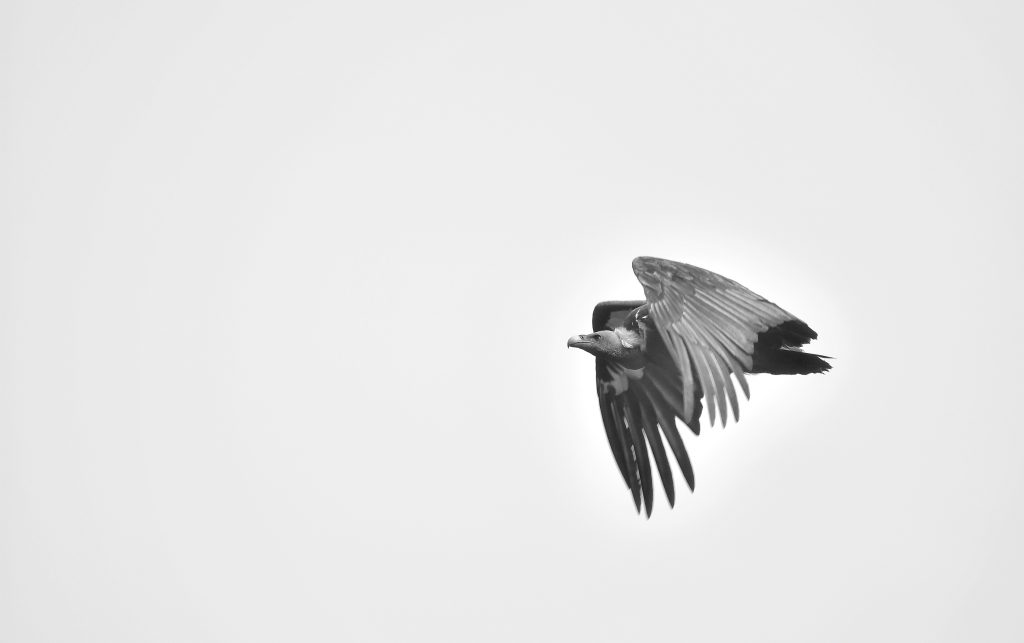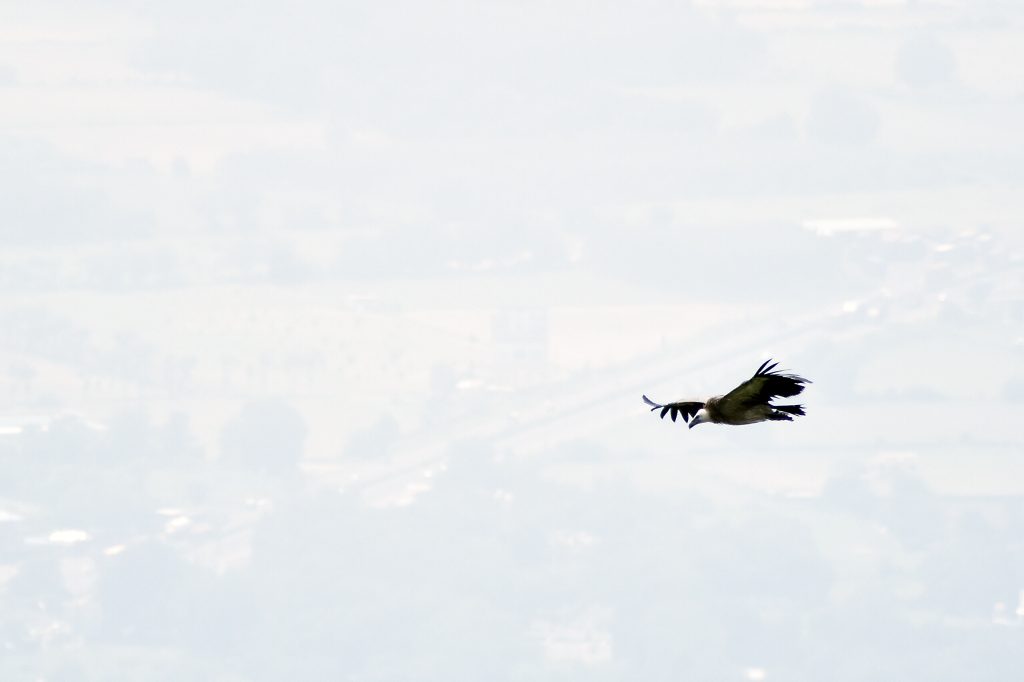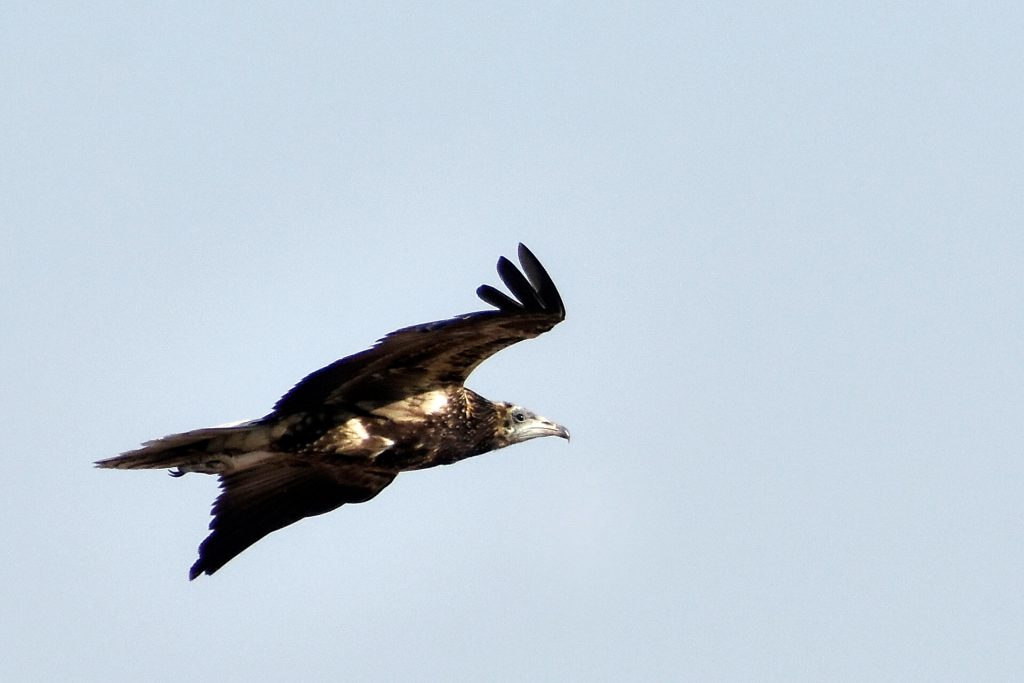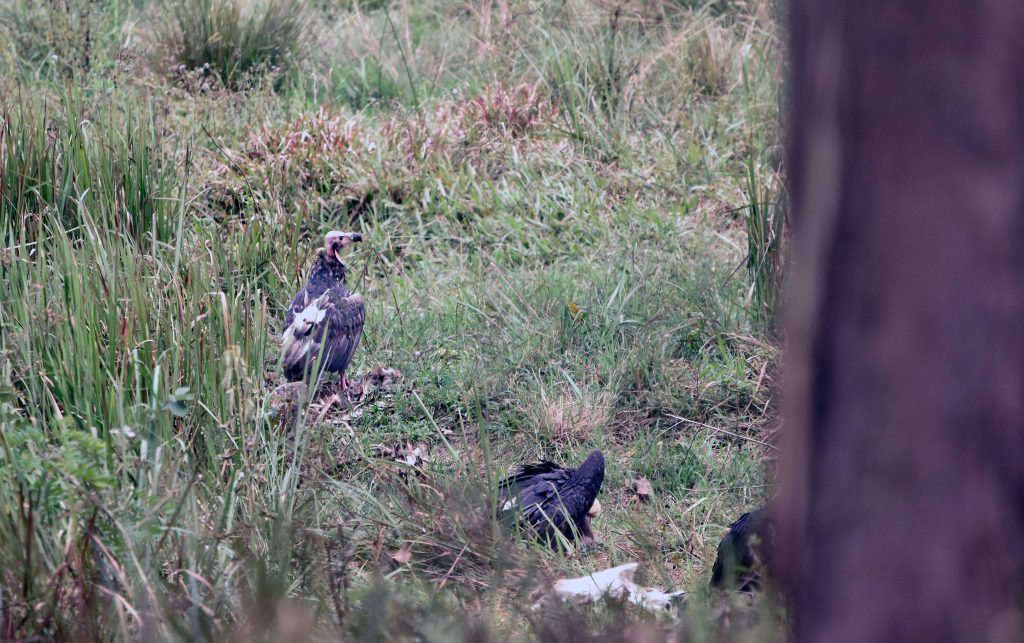Following Vultures – The Story Of My Quest
It was the month of January 2019, and I was participating in a raptor survey at Wayanad Wildlife Sanctuary in Kerala. Little did I know then, that the very first day would have something special in store, that would eventually end up becoming a small yet significant part of my life. As I was walking along a trek path bordering a grassland, I suddenly saw a huge movement of branches; it was like the whole tree just shook. A bird with a massive wingspan took off and flew over me. I had never seen a bird so huge; it appeard to be something straight out of Jurassic Park. There it was: a magnificent White-rumped vulture, my first-ever sighting! I was left utterly thrilled and awestruck by the captivating moment I just experienced. I continued the survey, hoping to sight more of them. I saw a few more vultures soaring very high up in the sky through my binoculars, but the thrill I got seeing one up close was incomparable. That fateful sighting was what sparked my interest in working with White-rumped vultures in Wayanad Wildlife Sanctuary for my PG dissertation. Not much as been studied about these unique vultures studied in India, and I was drawn by their ecological significance. Not only that, but this species is listed as Critically Endangered on the IUCN Red List, and protected under Schedule I of the Wildlife Protection Act, 1972.

White-rumped vulture from Wayanad. Photo by Sujnan, WTI
Vultures are birds of prey that play an important role as scavengers, they help in maintaining the health of an ecosystem by scavenging animal carcasses, thereby reducing risks of disease emergence and transmission, they are considered to be sentinel biomonitors of prevailing environmental quality and conditions. Vultures being scavengers also help in nutrient cycling. During my field work at WWS, I got to see the White-rumped vultures several times on their roosting sites and near carcasses, and on one occasion I was lucky enough to spot Red-headed vultures as well. Seeing a different vulture species for the first time was also an awe-inspiring moment. There was a lot of unaccomplished vulture searches over the years, but later on in 2022, I managed to sight Himalayan Griffon vultures from the Pavagadh hills of Gujarat and Egyptian vultures at Balaram Ambaji Wildlife Sanctuary in Gujarat.

Himalayan Griffon from Pavagadh hills. Photo by Sujnan MK, WTI
A prominent characteristic of most vultures is the bare head and neck which are usually assumed to be the adaptations of a scavenging lifestyle, to prevent soiling of the feathers when feeding inside carcasses and play an important role in thermoregulation. As they are obligate scavengers, vultures are highly specialized to consume large carcasses rapidly. Features such as the sharp bill, barbed tongue and thick stratified squamous epithelium of the buccal cavity and esophagus enable the rapid swallowing of large food items.

Juvenile Egyptian vulture during flight. Photo by Sujnan MK, WTI
There are 23 species of vultures in the world which are classified into two categories, Old world vultures and New world vultures. Convergent evolution is the reason behind the similarities between the two groups. Convergent evolution is the process where organisms not closely related (not monophyletic), independently evolve similar traits as a result of having to adapt to similar environments or ecological niches. Old World vultures fall under the family Accipitridae and are distributed in Asia, Europe, and Africa. There are 16 species of Old World vultures known to find carcasses exclusively by sight.
The New World vultures belong to the family Cathartidae include 7 species and are found in temperate and warm areas of the Americas. They find carcasses using their sense of smell, which is unusual for raptors. They are known to locate dead animals even from great heights or miles away. India is home to 9 vulture species, including migratory and resident species. So far, I have seen and photographed 4 of these species and hoping to come across the remaining 5 as well.

Red-headed-vulture spotted in Wayanad. Photo by Sujnan MK, WTI
The vulture population in the country was over 40 million during the 1880s, but a rapid decline in their numbers was witnessed in 1990, and within a span of 10 years, 95% of the entire population has declined. Veterinary use of the non-steroidal anti-inflammatory drug Diclofenac was the major cause of this population decline. Vultures get exposed to Diclofenac when they feed on livestock carcasses that die in under a few days of treatment, which carry residues of the drug. Visceral gout has been a consistent feature in dead vultures examined in India, Nepal and Pakistan. The condition occurs as a consequence of severe renal dysfunction, where a reduction in renal filtration leads to an increase in blood uric acid level. Uric acid precipitates to form a white chalky or paste-like coating over the surface of visceral organs (particularly the liver and heart), with deposits through many tissues. Visceral gout is not considered specific to any particular disease but can occur subsequent to many infectious and non-infectious processes that lead to renal dysfunction.
At present, I am back in Wayanad and whenever I go out on the field, I keep my head up, hoping to see these magnificent birds again , in the place where it all began. Last month, I got to see White-rumped vultures a couple of times soaring high in the sky, and the same level of excitement still coursed through me. It is indeed a sight to behold and I hope to see more of them in the near future.
Sujnan MK is a wildlife enthusiast, naturalist and photographer who is working as an Assistant Field Officer for Wayanad Conflict Mitigation Project.









